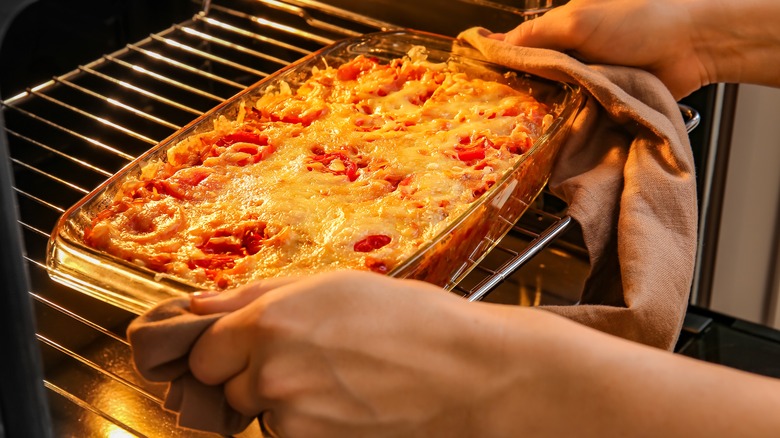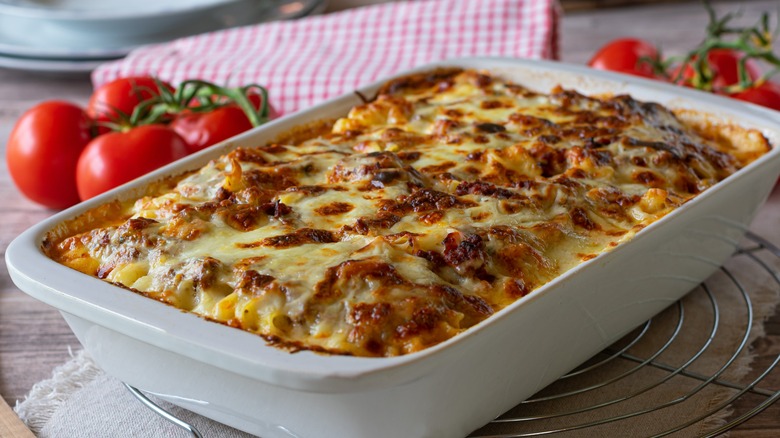Why You Should Think Twice Before Baking A Casserole In A Metal Dish
What's your favorite type of casserole? Defined by MasterClass as any dish that's prepared in a casserole dish (a deep, wide baking pan, that is) and baked in the oven, casseroles include pasta dishes such as lasagna, baked ziti, and mac and cheese; dairy-laden potato gratin; marshmallow-topped candied yams; and even deep-dish pizza. Technically, even desserts such as cobblers and crisps are casseroles: After all, they're all baked in that kitchen workhorse, the casserole dish.
It's likely that the home cooks among us possess one or more casserole pans in our cabinets. This multi-purpose baking pan is a reliable and versatile vehicle for all the recipes mentioned above and many more. And it's equally likely that among our casserole dishes there are a few different types: Metal (typically aluminum), glass, and ceramic since bakeware is most commonly made from these three substances, according to Kitchen Mystic. If you've pivoted between all three when layering your favorite casserole recipes, then you may have noticed that the clear winner for casseroles specifically is a glass or ceramic baking dish.
Casseroles made in metal cool too quickly when served
One of the pleasures of tucking into a casserole straight from the oven is its heat. On a cold night, what could be more comforting than piping-hot food? Therein lies one of the reasons that casseroles should always be made in glass, according to Bon Appétit. Your cheesy yellow squash casserole or creamy chicken Florentine casserole will stay nice and warm, even when it's transferred to the table for serving. As the outlet explains, glass is an insulator, meaning that it heats up slowly and retains heat well; the perfect thing for keeping baked foods warm outside of the oven. And the good news for those of us with a large collection of ceramic bakeware: As noted by Taste of Home, ceramic is also an insulator and can be subbed in for glass.
However, metal is a conductor, Bon Appétit writes, meaning that it heats up fast and cools down fast — hardly the best material for keeping a gooey cobbler warm. Other reasons that glass baking dishes are great for cobblers include the fact that they're naturally nearly nonstick, making it easy to cut baked-on foods into neat slices, and their nonreactive properties. Metal will react with acidic ingredients like tomatoes, creating off flavors, but glass and ceramic won't, so your baked pasta dishes will turn out wonderfully. So the next time casserole is on the menu, reach for a glass or ceramic baking dish.

